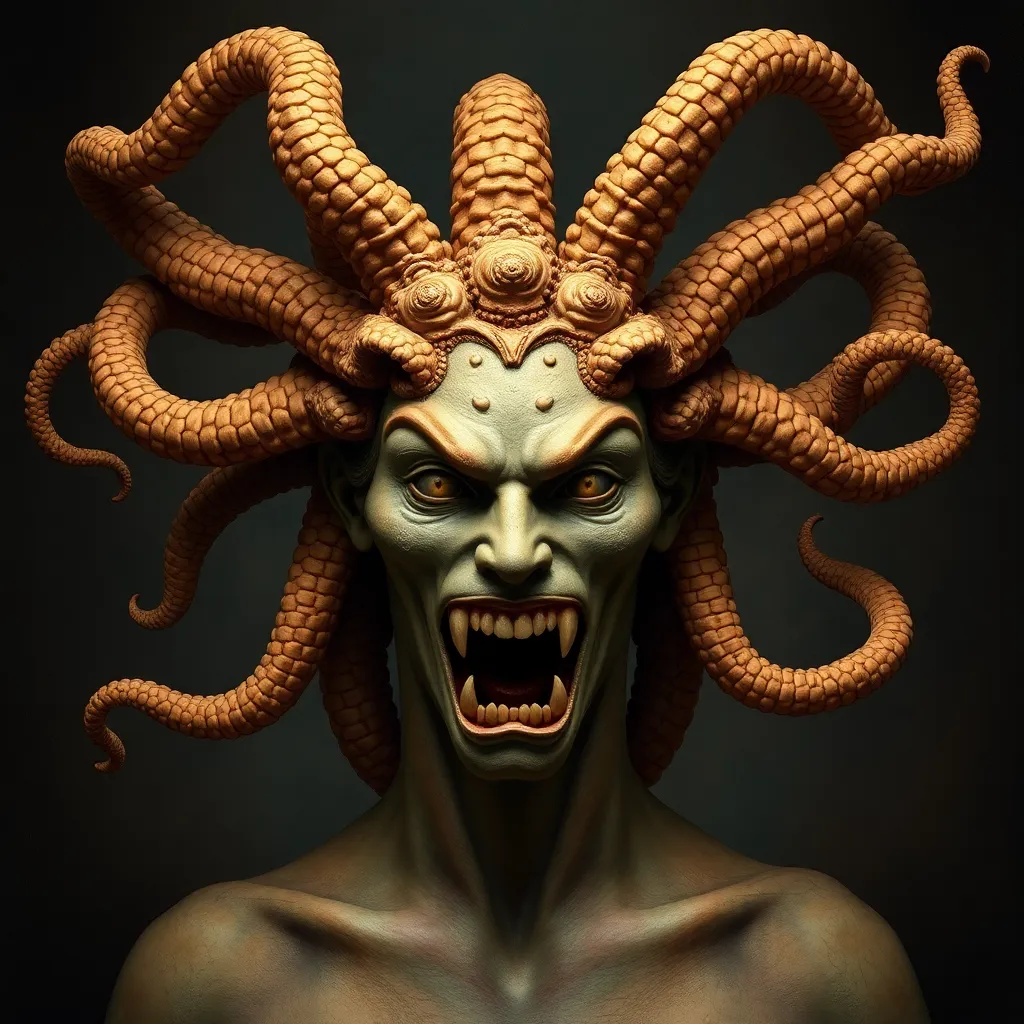Medusa in Art: How Artists Have Interpreted the Gorgon Through the Ages
I. Introduction
Medusa, one of the most iconic figures in Greek mythology, is a Gorgon known for her hair of serpents and the deadly power to turn anyone who gazes upon her into stone. Originally a beautiful maiden, her transformation into a monster was a punishment by the goddess Athena, serving as a cautionary tale of both beauty and horror.
The significance of Medusa in art extends beyond her mythological origins; she has become a symbol of fear, femininity, and power throughout the ages. This article delves into the various interpretations of Medusa in art, tracing her evolution from ancient Greek pottery to contemporary feminist expressions.
II. Medusa in Ancient Greek Art
Early depictions of Medusa can be found on ancient Greek pottery and sculptures. These representations served not only as artistic expressions but also as protective symbols.
- Pottery and Sculpture: Medusa’s image was often painted on vases and carved into stone, primarily as a representation of apotropaic symbols, which were believed to ward off evil. Her face was frequently used as a protective emblem, particularly in architecture, to guard against misfortune.
- The Gorgon’s Image: As part of a trio of Gorgons, Medusa’s image was significant in ancient mythology. Unlike her immortal sisters, Stheno and Euryale, Medusa’s mortality added a layer of tragedy to her character, enhancing her role in myth.
The image of Medusa in ancient art encapsulated the duality of beauty and monstrosity, reflecting societal fears and beliefs about female power and danger.
III. The Renaissance Revival of Medusa
The Renaissance marked a resurgence of interest in classical themes, including Greek mythology. Artists began to reinterpret Medusa, infusing her with new meanings.
- Key Artists: Notable figures like Caravaggio and Leonardo da Vinci created powerful works that captured the complexity of Medusa’s character. Caravaggio’s “Medusa” is particularly renowned for its dramatic intensity, showcasing her as both a victim and a monster.
- Themes: This period explored themes of beauty and horror. Medusa became a representation of female power, often embodying the struggles against patriarchal oppression.
Renaissance artists utilized Medusa’s image to challenge contemporary views of femininity, portraying her as both alluring and terrifying.
IV. Medusa in Baroque Art
The Baroque era brought forth dramatic expressions and heightened emotional intensity in art, further evolving Medusa’s representation.
- Notable Works: Artists like Gian Lorenzo Bernini and Peter Paul Rubens depicted Medusa in ways that emphasized her anguish and vulnerability. Bernini’s sculpture captures her moment of transformation, conveying a visceral sense of horror and despair.
- Tension in Imagery: Baroque art presented a tension between vulnerability and monstrosity. Medusa was portrayed not just as a monster but as a tragic figure, provoking empathy from the viewer.
This era’s interpretations revealed the complexities of Medusa’s character, inviting viewers to confront the emotional depths of her story.
V. Medusa in the 19th Century: Symbolism and Feminism
The 19th century saw the emergence of Symbolism, which profoundly impacted the portrayal of Medusa in art.
- Symbolist Influence: Artists like Gustave Moreau explored themes of gender and identity, depicting Medusa as a figure of female rage and empowerment. This era recognized her as a symbol of the struggles faced by women.
- Feminist Contexts: Medusa’s image evolved to embody female empowerment, challenging societal norms and expectations. She emerged as a representation of female strength in the face of oppression.
The 19th-century interpretations of Medusa reflect a growing awareness of gender issues, making her a potent symbol for feminist movements.
VI. Contemporary Interpretations of Medusa
In contemporary art, Medusa has been reimagined by various artists, reflecting modern themes of trauma and resilience.
- Modern Artists: Artists like Judy Chicago and Kara Walker have utilized Medusa to explore themes of identity and societal trauma. Their works challenge viewers to reconsider the narratives surrounding female figures in mythology.
- Popular Culture: Medusa’s image has permeated popular culture, appearing in films, literature, and media. She is often depicted as a complex character, embodying both horror and empowerment.
This modern reinterpretation of Medusa highlights the ongoing relevance of her story, resonating with contemporary issues of identity and resilience.
VII. The Evolution of Medusa’s Symbolism
The perception of Medusa has undergone significant changes throughout history, reflecting the evolving societal attitudes toward women.
- Changes in Perception: From a monster to a misunderstood figure, Medusa’s symbolism has transformed, illustrating the complexities of female identity.
- Duality of Medusa: The duality of Medusa as both a monster and a tragic figure speaks to the broader themes of fear and misunderstanding associated with femininity.
Artistic interpretations have been influenced by societal changes, revealing how perceptions of women and power have shifted over time.
VIII. Conclusion
Throughout art history, Medusa has journeyed from a fearsome monster to a complex symbol of femininity and power. Her representations reflect the evolving narratives surrounding women, beauty, and strength.
Medusa remains a relevant figure in contemporary art, symbolizing resilience and the struggle for identity. As artists continue to explore her story, Medusa serves as a powerful reminder of the enduring influence of myth in shaping artistic expression.




